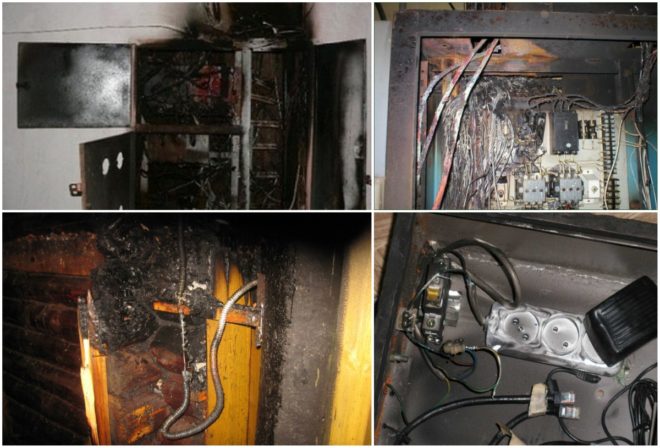A short circuit in the electrical wiring - what is it, causes and elimination

Regardless of the cause of the occurrence, the closure of the electrical wiring is one of the most unpleasant (in terms of diagnostics and repair) malfunctions of any electrical circuit - in an apartment, private house or industrial premises. A particularly difficult case is the closure of hidden electrical wiring, because the wires are hidden under a layer of plaster. Even if there are devices in the tools of a home electrician that will help find the place of damage without opening the walls, then for repair the wires will still need to be removed.
Content
Varieties of wiring closures, their causes and search methods
It would seem that the reasons for a short circuit in the power wiring and their varieties are different issues, but in fact they are closely intertwined. In fact, the short circuit is a consequence of a number of reasons why the phase wire is in direct contact with the zero wire, or the insulation between them does not prevent the occurrence of an arc discharge (of course, if there is voltage on the conductors). The main reasons why the wiring is short and what the consequences may be, by which you can determine the place of failure, are as follows:
Physical deterioration of insulation
Occurs over time and due to even minor, but regular temperature changes.
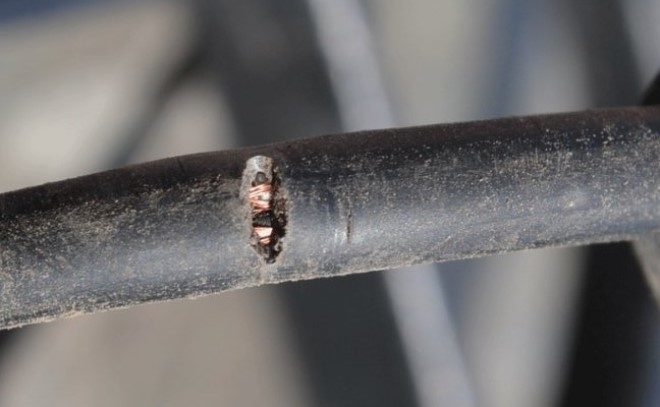
Usually, in this case, the insulation gradually becomes brittle from flexible - cracks appear on it in which moisture or dust can accumulate. In the event of an unfavorable combination of circumstances, this can provoke the occurrence of a short circuit through a microarc, and this is the most difficult case from the point of view of troubleshooting.
At the same time, outwardly, all the wiring looks intact, but when voltage is applied to it, over time, the circuit breaker knocks out.
The search for the overwhelming majority of faults in the electrical circuit occurs according to the principle of checking the "weak links" - these are any contacts, transitions - all those places where the outer cable insulation is exposed during installation. Therefore, in hidden wiring, troubleshooting should always be started in sockets, boxes and shields.
As a result - in this case, a careful examination of the wiring is carried out - if the circuit breaker is already knocking out, then the place of damage to the insulation will probably be burnt and it will become visible. In some cases, you have to fix the "stress test" wiring - by applying increased voltage to it. This is a rather extreme method, because in fact it is necessary to provoke a full-fledged short circuit of the electrical wiring, after which the place of the malfunction is visible “with the naked eye.
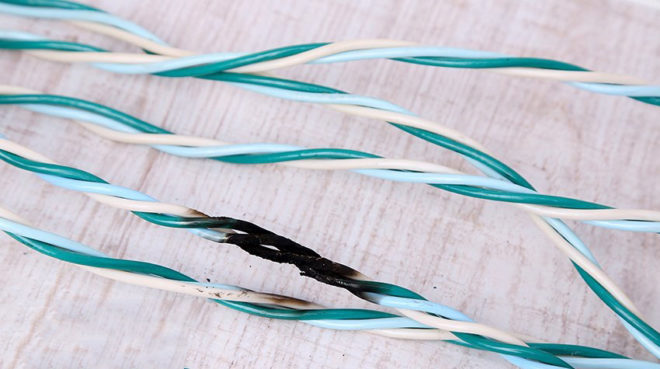
For hidden wiring and finding microcracks in the insulation, you can also use a megohmmeter, but it will only show the presence of a short circuit in a localized section of the electrical circuit, and cannot determine the place of its occurrence.
After we find a malfunction, then, depending on the general condition of the wiring, it is necessary to decide whether to change the cable or do with the restoration of insulation with electrical tape.
An example of a megohmmeter is on the video:
Damage to insulation by rodents
This is a fairly frequent phenomenon in rural areas, and in industrial conditions such breakdowns are far from uncommon - mice gnaw through the outer insulation of cables, then the inner one and close the phase with zero.
The difficulty of finding such a malfunction may lie in the fact that it is not known where the mouse could choose a place for its "meal". But on the other hand, usually the place of damage is clearly visible, so a superficial examination of the wire is sufficient, albeit along its entire length.
It should be borne in mind that a full-fledged circuit does not always occur here - sometimes the mouse can partially damage the insulation and short-circuit the wires not directly, but through itself. In this case, it is highly likely to find the place of damage to the wire by a dead animal, which is chained to the gnawed wire by a convulsion from an electric current. Although sometimes it happens that the mouse throws away from the cable, especially if it manages to short-circuit the wires directly and a full-fledged short circuit of the gnawed wiring will occur.
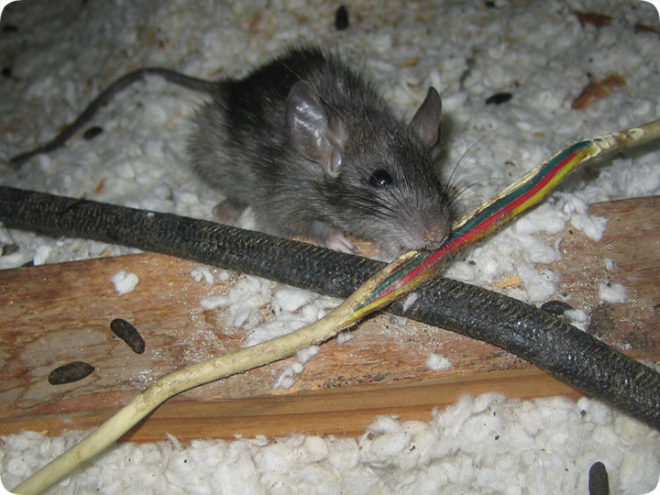
Significant overheating of cable insulation
This is not always noticeable to the eye, but when voltage is applied to the wires, an electromagnetic field begins to act on them, which tends to straighten their metal part. While the wire is operating normally, this does not really matter, but if a too powerful consumer is connected to it, then the wires will begin to heat up. When, as a result of this, the insulation becomes soft, the conductors, under the influence of the electromagnetic field, will loosen the plastic from the inside, and over time, they will completely break through. As a result, a full circuit will occur and the circuit breaker will knock out, and if you are not at all lucky, the cable insulation itself will light up.
Until the wire insulation melts, it is impossible to visually notice that it becomes soft - therefore, after laying a new line or connecting additional electrical equipment to it, it is imperative to check whether the cable is heating up.
Wire manufacturers usually indicate on the tags how many short-term heats the insulation can withstand, but in any case, if overheating has already occurred, then it is better to change the cable.
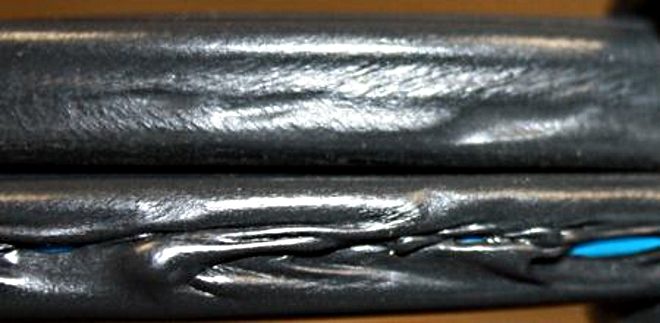
Direct connection of phase and neutral wires
The reasons why the power wiring directly shorted out can be very diverse - from banal carelessness, which is sometimes allowed during installation, to an accident due to a storm or other natural disaster.
The main thing here is that with direct contact between the phase and zero, there is always an abrupt increase in the current strength and temperature on the current-carrying conductors. In most cases, the wires are not designed to withstand short-circuit currents, therefore a mini-explosion occurs at the point of contact, as a result of which the insulation burns out, and the scattering molten particles of current-carrying conductors carry its ash around. In this case, there is no particular problem in how to find a short circuit in the wiring - everything is visible with the naked eye - the wires are melted and everything around is in soot.
It should be especially taken into account that soot, which covers the entire adjacent surface, like dust, is capable of conducting an electric current in certain concentrations, therefore, when eliminating the consequences of a short circuit, it must be carefully cleaned.
How to prevent short circuits
The easiest way is to follow the recommendations written in the PUE - almost all entries in this book are preceded by some kind of accident or at least an emergency. Well, since most likely no one will learn the rules, at least one should be guided by common sense, which dictates the following:
- If the wiring is old, it is highly recommended to replace it. If for some reason this is not possible, then at least it is necessary to inspect the contacts of the sockets and assess whether they require additional insulation.
- If the apartment was flooded by the neighbors from above, then even if nothing shorted, this is an occasion to reconsider the twisting of wires in the junction boxes - under the influence of moisture, the sticky side of the electrical tape loses its properties.
- You need to be careful when driving nails into walls - an unsuccessfully hammered nail brings with it a lot of "headache" for replacing a broken wire.
It is highly recommended to draw up a wiring plan when carrying out a major overhaul, and if there are twists of wires in any place, then be sure to indicate it on the diagram - this is a potential "weak link".
You can also just take a photo of the wires before they are hidden in the wall.
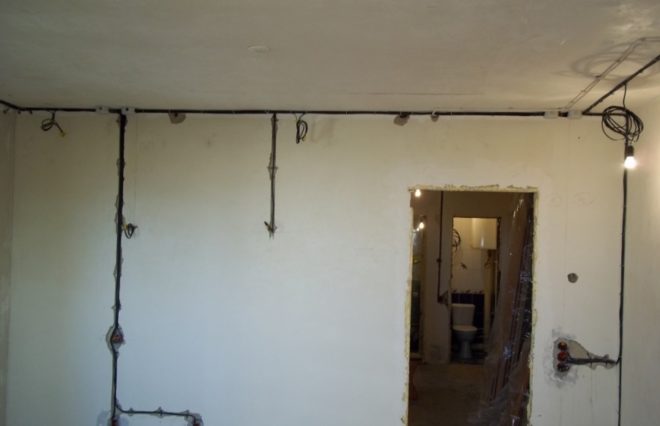
- In the private sector, it is imperative to take additional measures to protect the wiring from rats and mice - there are a fairly large number of ways to combat rodents found by household electricians - these can be metal corrugations, smearing cables with mastic and other methods.
- If you had to turn on a powerful device into the outlet, then you should double-check if the contacts and the state of the insulation are burnt.
An example of finding a short circuit with a special device - in the video:
Elimination of the consequences of a short circuit
Most often, it all comes down to replacing the damaged section of the wiring, and it is almost guaranteed that you will need to build up the cable instead of its burnt out piece. The basic rules are as follows:
- The space adjacent to the location of the short circuit must be thoroughly cleaned of soot - it can provoke a repetition of the short circuit.
- You should not save on the wire and try to leave a live core on which the insulation burned out - it is always better to completely replace the wire.
- If a full-fledged closure has not yet occurred, but the sockets have begun to melt, then you should not try to repair them - after numerous heating / cooling, the metal structure changes and the device becomes more vulnerable.
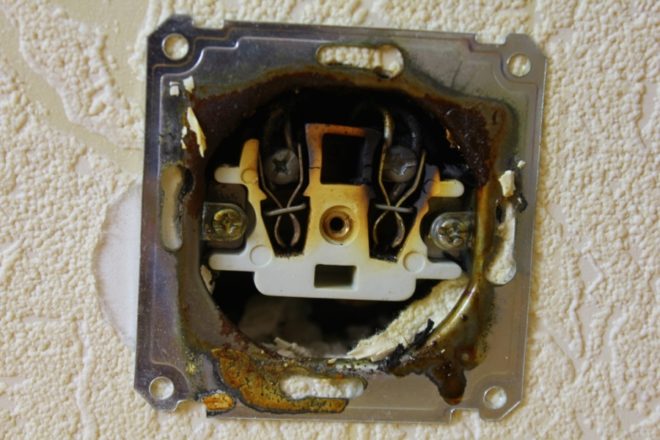
If the wiring began to shorten "from old age" (the insulation has become fragile), then this is an urgent signal for a complete repair - in any case, it will cost less than eliminating the consequences of a possible fire.
As a result - should you be afraid of a short circuit
Usually, the very process of a full-fledged short circuit in the wiring is very fast - everything happens within a fraction of a second, after which the protection is triggered. Old-school electricians even have black humor on this topic: "Turn it on - if it is short, we will see it right away." This means that all the necessary security measures must be applied before an abnormal situation occurs, and if it does occur, then all that remains is to eliminate the consequences.

